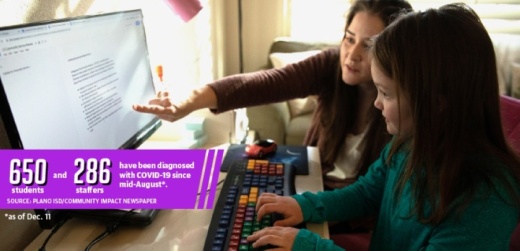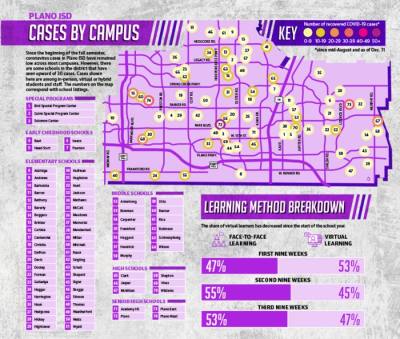Boerner said she opted for virtual learning for the fall semester but is switching her first grader to in-person school in the spring.
“The words of affirmation ... telling her she’s doing a good job and all that, it’s just, it’s very limited compared to what she would be getting if [she] were in the classroom all day with that teacher,” Boerner said.
Whether their students should attend school virtually or in person is a decision that PISD parents have been grappling with amid the pandemic. The first semester involved a huge learning curve, with technology changes, the coordination of classes, and students and staff moving in and out of quarantine because of exposure to the coronavirus. The district has made adjustments along the way, and more are to come.
“We can’t possibly satisfy every single desire,” Superintendent Sara Bonser said at a Dec. 3 forum hosted by the Plano Chamber of Commerce. “But we know that the success we’ve had is because our health and safety protocols, and the models that we have implemented are keeping our schools open.”
Adjusting to new learning models
Districtwide, about 47% of students signed up for in-person learning at the beginning of the year. For the second nine weeks, that percentage increased to 55%, according to district data.
In November, parents were able to once again change their student’s learning environment for the third nine weeks of the school year. Results showed a slight drop to about 53% of students in in-person learning once school resumes after the holidays.
District officials said the hybrid model, which calls for on-campus instruction two days a week and remote learning the remaining three days for high school and senior high school students, will continue for now. Based on staff feedback, students who are struggling academically or have poor attendance may be required to do face-to-face learning four days a week. Elementary and middle school students will continue to do all virtual learning or in-person learning five days a week.
Teachers also plan to increase interaction with and support for students during times previously set aside for students to do assignments on their own, according to the district.
Bonser said the district has not seen much change this year in the number of students failing classes compared with previous school years.
“What we did notice is that the kids who are at home who are failing are failing more classes,” she said.
Mitigating the spread
The district has seen upward of 700 COVID-19 recoveries so far this semester among staff and students in all learning environments. Another 148 students and 50 staffers were listed as having active cases as of Dec. 11.
The number of cases has significantly increased since October, according to a video message to parents from Bonser.
Only 19 of the more than 700 recovered cases were believed to be caused by community spread within PISD as of Dec. 3, Bonser said. Those cases involved either students not wearing masks during sports or people not following mask policies, she said.
As of Dec. 3, roughly 3,000 students and staff had been quarantined at one point during the semester due to proximity to a person with COVID-19.
PISD’s most severe mitigation effort so far this school year came with the weeklong closure of Jackson Elementary School. Six unrelated cases on campus had affected enough teachers and classes that 25% of the campus was quarantined. Without enough bilingual substitutes available, the district decided to halt in-person learning, Bonser said.
“Closure is a little bit of a misnomer because we never closed,” Bonser said. “We stayed open, but we did it virtually.”
The district announced Dec. 14 that it would revise the definition of a "close contact" and change the district’s quarantine policy effective Jan. 1. The updates are being made in collaboration with the Collin County Health Services Department and the district’s public health authority Dr. Mark Gamber. This move aligns district policy with recent updates from the Centers for Disease Control and Prevention as well as the Texas Education Agency, according to the district.
When the new semester begins Jan. 4, close contact will be defined as “being within 6-feet of an infectious person for a cumulative total of 15 minutes or more during a 24-hour period,” though factors such as consistent and proper masking could affect that determination. Proper masking is defined as when “both the infectious individual and potential close contact are wearing a multi-layer face mask that covers the nose and mouth and fits around the nose and chin.”
The revised quarantine period for those considered to have been in close contact with an infectious person will be 10 days. The current policy calls for a 14-day quarantine and requires the student or faculty member to complete the COVID-19 Student Reporting Form.
William C. Wadsack contributed to this report






